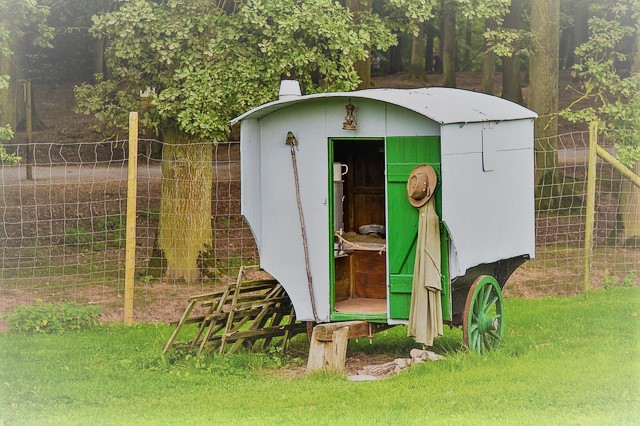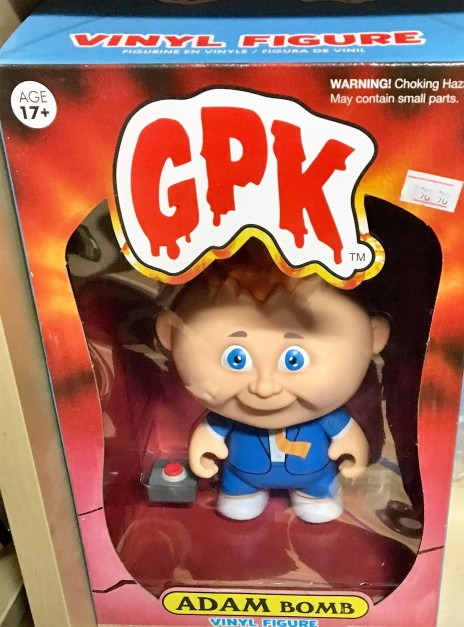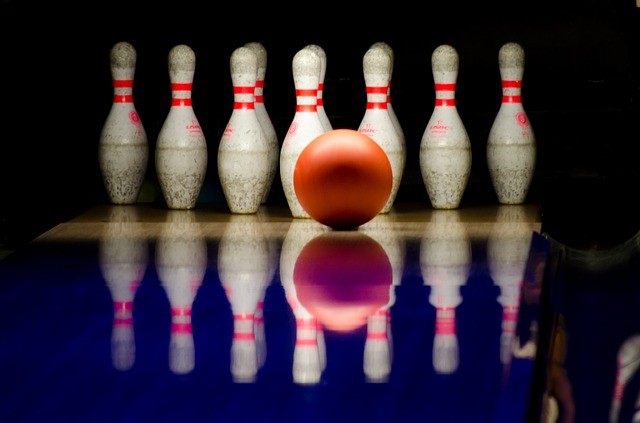In the previous post, I discussed how hobbies in fiction help develop characters, something which can set up expectations of character behavior as well as lend itself to exploring a work’s thematic elements. In part II, I look at how hobbies influence setting and plot.
Setting and Hobbies: Everything in Its Place and Time

Because characterization is the most obvious effect a character’s hobby has, it’s perhaps less intuitive that character hobbies make demands of the setting. Hobbies, however, must be conducted somewhere and that’s where setting comes in. Some hobbies, being rather portable (reading), can occur wherever it suits the writer, while others dictate the setting where they occur (surfing). Writers, therefore, can use hobbies as a reason to place characters into a specific setting where they wish the scene/story to occur. Travel for pleasure[*] happens to be a rather effective hobby that allows writers to introduce their characters to new people, places and experiences. Toad from Kenneth Grahame’s classic children’s novel The Wind in the Willows regularly falls in love with new means of transport (whether its rowboats or motor cars) that let him travel and adventure. While Toad’s hobbies often reveal his impulsiveness and reckless side, one of the book’s notable adventures begin when Toad’s enthusiasm for the latest vehicle spurs him to gather his friends to travel and seek excitement. Similarly, hobbies can signal the story’s timeline. In Zadie Smith’s novel Swing Time, the presence of Garbage Pail Kids collectible trading cards reveal Tracey’s subversive edge and her tendency towards divisiveness as well as places the timeline in the mid-1980s.

Setting the Plot: Hobbies, World-Building and Plot in the Harry Potter Series
Given the greater burdens that exist for establishing settings in fictional genres that involve world-building,[‡] character hobbies can be a useful means for conveying information about these settings. Fantasy novels, for example, typically involve intense world-building since they diverge from strictly realistic settings. J. K. Rowling based her Harry Potter series in a hidden magical realm that exists alongside the real world. Although a portion of her setting existed, the magical areas of the world did not. Therefore, she needed to create the parameters for these magical places, their inhabitants, their society, how these realms and their elements interact (eg, magic makes electrical items malfunction), and so forth. Newcomer Harry Potter acts as the reader’s stand-in for these discoveries in Harry Potter and the Sorcerer’s Stone.[§] Rowling uses a common childhood hobby to allow for comparisons between the magical and nonmagical settings to illustrate how the former operates (in its role of world-building) as well as cleverly introduces a mean of revealing information that forwards her novel’s plot significantly.
The Famous Witch and Wizard Cards: Hobbies as an Approach to Establishing Setting
Much like Smith, Rowling employs trading cards in her story—but with the expected magical twist. While traveling to wizarding school, Harry purchases the unfamiliar foodstuff of the magical world. Among his sweets are Chocolate Frogs, which come with the Famous Witches and Wizards (FWW) cards. In the real world, trading cards that feature real people often provide an image of the person and some relevant information about the individual (eg, baseball cards indicate the player’s position and stats). The FWW cards Harry receives mirror such cards in that they include a picture of the witch or wizard accompanied by a biography that lists their claim to fame and other interesting trivia such as their hobbies.[**] What makes them different is that the cards are enchanted, with the images moving like living people (Rowling 101–3). In addition to allowing readers to see how trading cards differ between these realms, these cards also prepare the readers and Harry for how other pictorial representations behave in the magical world (eg, portraits that he encounters speak to people and travel from frame to frame). Its role in helping establish expectations for this magical setting, then, even supersedes that of delivering (or confirming with some details) biographical information about school headmaster and major character Albus Dumbledore—the subject of Harry’s first FWW card.

Setting to Plotting
Rowling’s ingenuity is not limited to creating comparisons between the world Harry knows and the one he’s joined. In contrast to Smith’s Garbage Pail Kids, the presence of the magical trading cards reveal little about the children collecting them (as I noted above, we learn more about Dumbledore here). However, Rowling’s inclusion of this hobby is inspired because such cards are natural things for children to collect—as Ron and Harry do—and it allows her to interject information into the narrative as needed. During his first weeks at school, Harry and his friends (Ron and Hermione Granger) become aware that some important item recently arrived at the school for safekeeping and that there had been attempts to steal it. Having learned through unintended admission that the hidden object involved both Albus Dumbledore and another wizard named Nicolas Flamel (a name Harry is certain that he read previously), the children begin researching Flamel in hopes of finding more information about the object and why it is being hidden. Shortly after the Christmas holidays end, Neville Longbottom gives Harry one of the FWW cards for his collection. It’s the Dumbledore card, which mentions his alchemical work with Flamel—hence the reason Flamel’s name seemed familiar to Harry. With this insight, Hermione locates the necessary details about Flamel, which in turn reveals that the Philosopher’s Stone is the item hidden at the school (102–103, 218–220). Discovering that the mystery item is the Philosopher’s Stone (as well as why someone would steal it) is a major plot point here, and it’s Harry’s modest hobby of collecting FWW cards that allows the children to make this leap.
Hobbies and Fiction
Rowling frequently and often playfully employed hobbies throughout her Harry Potter series, using them to reveal facts about characters, forward plot and even provide opportunities for her fictional adolescents to change settings (Quidditich, for one, gets them outside the castle). Writers such as Rowling, of course, rarely add details about characters to provide a laundry list of biographical data, something which most readers would likely find dull. Instead, she provides hobbies with specific goals: showing Molly Weasley’s kindliness when she knits Harry a sweater for the holidays or revealing Hagrid’s pet hobby of raising dangerous critters, something which informs the plot in a few places (in this book and others). Including character hobbies is among the important decisions a writer makes when developing a character, one that stretches beyond the role of characterization. Therefore, the hobbies we see in fiction represent the writer’s use of a practical and versatile approach to character that extends past its initial role in characterization to developing other areas of a narrative as much or as little is needed to achieve the story’s goals.
NOTES:
[*] Travel for personal enjoyment allows many fictional detectives to leave their normal environment and discover mysteries in the wild, as it were. It’s also a matter of practicality in detective series: mysteries always started at the detective’s office or set in an amateur detective’s hometown can become formulaic.
[‡] Genres most identified with world-building are science-fiction/speculative and fantasy fiction, both of which constructing new worlds. I’d argue historical fiction also belongs here, as world-building in this genre takes the form of reconstructing the world of the past.
[§] However much it annoys me that the American title differs from the British one, it’s the title of my copy and therefore the one I must use for the citation:
Rowling, J. K. Harry Potter and the Sorcerer’s Stone. New York: Scholastic Press, 1997.
[**] Hobbies within hobbies! Of note, the FWW cards play a role in characterization here, although it’s not the scene’s focus.


Very good points about using hobbies, and I agree about world-building in historical fiction. The last two books I’ve read were historical fiction (both from the 21st Century Literature group on Goodreads: Sophie & the Sibyl, and The Glass House). I was absorbed and impressed by the world-building the authors put into each work. If hobbies are omitted from such novels, I find myself wondering, ‘But what did they do all day, especially before the events of the book?’
On a side note, have you noticed Disney films feature hobbies a lot more? It seems to accompany their attempts to give the characters more depth, and supports your idea of how important hobbies can be.
LikeLiked by 1 person
I’m glad you agree about world-building in historical fiction, as I was somewhat hesitant to include it since most definitions stop at sci-fi/fantasy. From a writing perspective, I think hobbies can be important for books set in the pre-industrial era, especially when you consider scene building. Without modern conveniences, people often waited long periods and had to amuse themselves. What do people do in the scene when waiting to travel? While traveling? When their work is done? We should see card playing, singing, and the like. ( As an aside, I also belong to the 21st Century Literature group.) Cheers to the authors who commit ours to study to find out the era-appropriate pastimes!
In general, TV/film can benefit from judicious use of hobbies because because the medium doesn’t always allow for exposition that can reveal character. Since you’ve mentioned it, I can think of 2 or 3 Disney films where main characters had hobbies that clearly set up certain expectations. Belle (Beauty and the Beast) would probably be the best example here, since her avid reading signals that she’s learned (hinting at her potentially being more open-minded) and an outsider in her community (source of conflict).
LikeLike